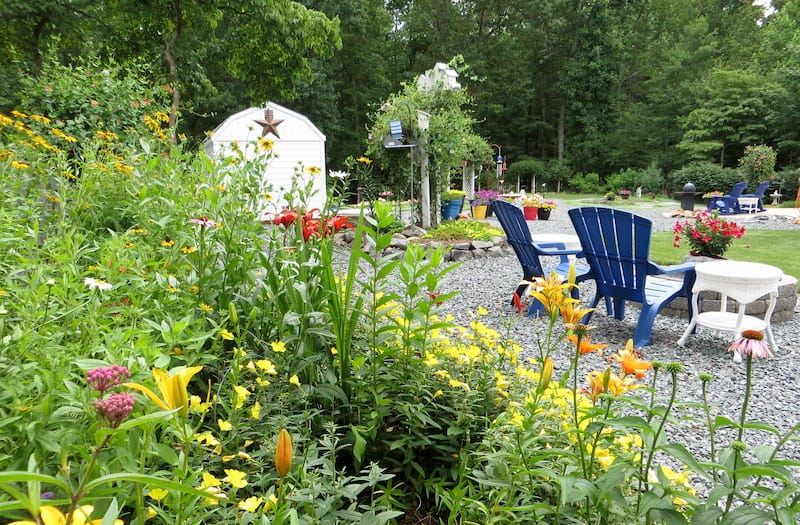Reflecting On The Past Growing Season & Planning For Spring
By Amanda Shepard
Although winter is often thought of as the “off-season” in gardening, it’s really the best time to reflect on the past growing season! Take stock of what grew well and what didn’t and dig into planning your garden for next season. Winter reflection and planning will help to keep the restless gardener busy, thinking and dreaming of putting your hands in the soil.
Reflecting On Your Garden Last Season
If you’re the type of gardener who is always trying something new in the garden, this is an important step. Take inventory of everything you planted last season in a garden journal; throughout the season (or at the end), take note of what did well and what didn’t. You can then go back and make sure everything is planted in the proper spot for its sunlight preference, or realize that plant might just not do well in your garden.
Taking note of what worked will help you plan for next season. For example, if your Bleeding Hearts grew and bloomed profusely the first year, try adding several other varieties. If you really enjoyed the colorful Dahlia blooms in your front garden bed, make a note to add more to the garden this spring.
It's also important to keep track of what didn’t grow so well. This will help you learn more about your garden. It’s all about trial and error in the garden. For example, did your Peony grow, but no bloom? This might mean it was planted too deep and can be dug up and re-planted in the early spring. Maybe your Caladium bulbs were stolen from their pots and enjoyed as a snack for the neighborhood squirrels? These are all things that are helpful to keep track of in your garden journal so you don’t have the same problem next season.
Along with your notes about plants, it’s also really helpful to draw diagrams of your garden. Once everything dies back, it can be difficult to remember exactly what is planted where. If you draw a map of your garden, you will remember exactly where your Astilbe lives and just how many Daffodils you planted. This is also a great tool for planning your spring garden, since you’ll know where there are open areas to plant!
Garden Journal Tip: If you find it hard to remember to write in your garden journal, try writing in it on each holiday of the year, starting with New Year's Day. You'll hit dates throughout the gardening season if you write on St. Patrick's Day, Earth Day, Memorial Day, Father's Day, The Fourth Of July, Labor Day, Indigenous Peoples Day, and Halloween. If you write in your garden journal on the holidays, you'll definitely have enough information to reflect on the gardening season at the end of the year.
Garden Planning For Next Season
After you’ve reflected on the past growing season, it’s time for the fun part – planning your planting for the next season.
Tackling Challenges
- If squirrels and deer are a challenge in your garden, look for deer-resistant bulbs and deer-resistant perennials.
- If you’re looking to fill in your shade garden, try shade-loving perennials and bulbs.
- Make sure you come into the season with a set gardening budget, taking into account plants, fertilizer, soil, mulch, containers, and possibly tools if you need them.

Finding Inspiration
One great way to plan for spring is to start several Pinterest boards to organize your ideas. Label the boards with their different purposes or ideas, like "Shade Garden," "Container Gardening," or "Big Ideas" to help categorize your pins. Pinterest lets you scour through thousands of gardening ideas and save as many or as few as you'd like, making it easy to come back and sort through them when it's time to plant.
Follow American Meadows on Pinterest, Facebook, or Instagram for garden inspiration! Try following the hashtag #gardeninspiration on Instagram. You can also find great garden design magazines for inspiring imagery.

Finding The Right Plants
If you’re planting a brand new garden bed, think about its theme. Do you want to plant for pollinators, create a cutting garden, plant a fragrant aromatherapy garden? We've grouped our perennial plants by helpful categories to make shopping and garden planning easier.
Learn about planting for pollinators in our guide: Planting For Pollinators: Attracting Hummingbirds, Bees & Butterflies.
Looking for an easy place to start? Go with our easy and stylish Pre-Planned Gardens and Perennial Collections, designed by our own gardening experts!
If you're planting in containers, think about re-purposing items you already have for pots and making sure you have a nice variety of containers. Plan your containers with annual and perennial varieties that go well together and add texture and color all season long. Designing a container with perennials is really like designing a small garden bed. You’ll want to make sure you put varieties together that require the same amount of light and that will complement each other with foliage and blooms at different times in the season.
Learn more about container gardening in our guide: How To Grow A Healthy, Vibrant Container Garden.
The garden possibilities are endless and once you’ve taken stock of what went well last year and what didn’t, it will be easier for you to choose varieties that have a better chance of thriving in your garden. And what better way to spend the winter months than dreaming, scheming and longing for spring?

